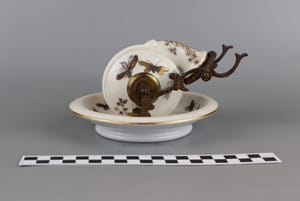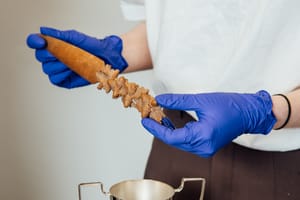Opening tomorrow, Friday 21 June, Rising Splendour: Fred Appleyard from the Royal Academy to the Itchen Valley, sees a vibrant and impressive exhibition stemming from the Trust’s fine art collection come into full bloom at The Arc, Winchester.
150 years since his birth and merely miles downriver from the artist's favourite haunts, the art of Fred Appleyard is re-emerging. The diligent work of curator Melanie Rose, family members, the Trust’s exhibition team and members of the public have helped unearth forgotten artworks by a nearly forgotten artist.
Excitement for this show has built considerably amongst the exhibition team with every painting discovered. In this article, John Reed, Visual Exhibitions Assistant, will take you behind the scenes to explain our excitement.
Collection gems
This show began with the collection. Hampshire Cultural Trust holds 11 paintings by Fred. It was these works that drew the attention of the Appleyard family, who were hoping to create a commemorative exhibition.
Approached by the family, we revisited the works held by the Trust, and though they are small and nestled, unassumingly, in the collections store, they brim with beauty. Itchen Valley Landscape with Figure exemplifies this, with the bright blue sky glinting promisingly. Executed by an expert colourist and master in light and composition, these works inspired us to look further. Fred’s works were hidden gems. Numerous other works visible online, like Shaded Water, showed his sensitivity to atmospheric generation and paint modulation.
The pieces of Fred’s story began to emerge as expansive and intriguing. We learned that his art practice led him from Yorkshire to London and finally to Itchen Stoke in 1918, his work moving between realist, poetic, classic academic and pre-Raphaelite styles and impressionist paint handling. An exhibition of the artist became an irresistibly intriguing opportunity. The descendants of Fred held an abundance of materials awaiting investigation. But barriers, including a lack of publications, limited information in public collections about the works or the artist and a general all-around lack of awareness inhibited us. To bridge the gap, we needed to bring in a curator who could uncover technical and intangible personal depths.
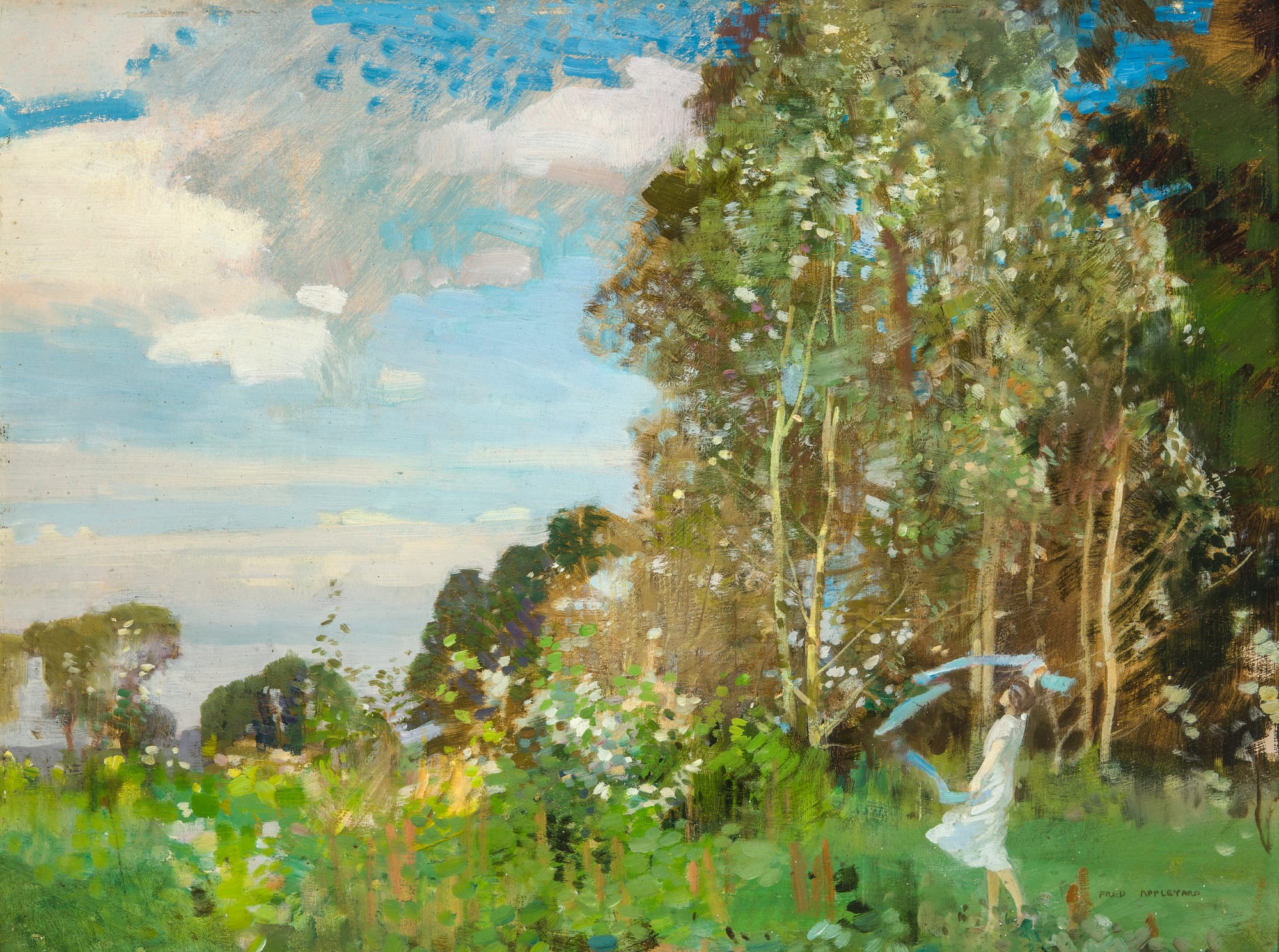
Recruiting a curator
We decided to invite Dr Melanie Rose to curate the exhibition. Who better to rediscover an artist than an artist? Everything aligned perfectly. Melanie lives close to where the artist lived and - with yet more spooky coincidences - is also a prolific plein air painter and has deeply investigated the South Downs through her PhD research. Melanie has an intuitive understanding of connections between people, places and painting. She was perfectly placed to lead the charge to reintroduce Fred as an excellent artist.
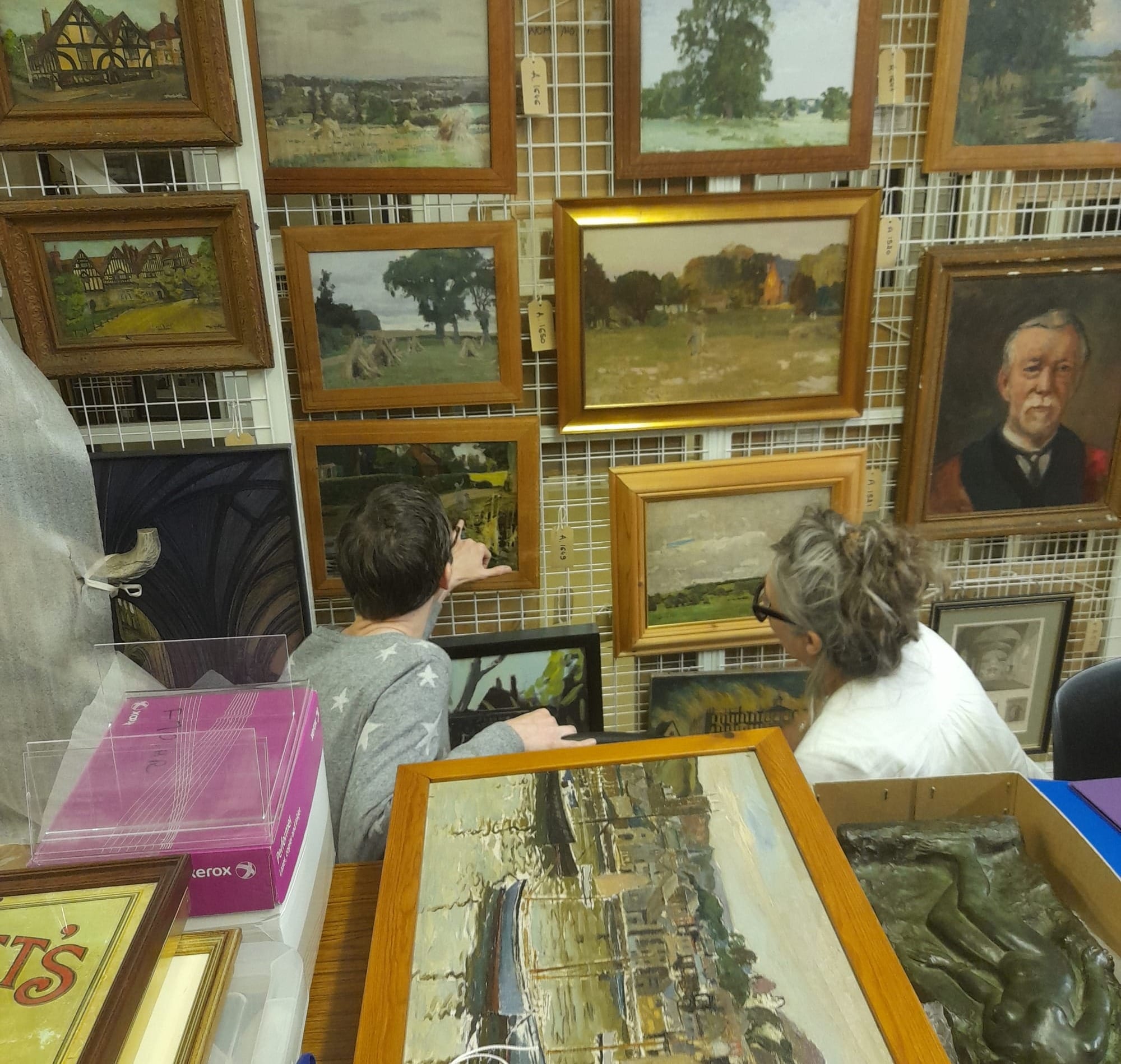
Searching for Fred
Mel took to the role with great enthusiasm. Finding familiar scenes rendered by the hands of an artist born over a hundred years ago proves very compelling. She travelled across the country, pulling out works held by family members, discovering Itchen trees in central London and South Downs hills in Stroud.
Concurrently, I searched the internet, archives, books and libraries for traces of Fred, corresponding with stakeholders such as the Royal Academy, gradually building a picture of Fred's early career and studies.
Making finds of physical work and information was a constant in the development of this show. The Appleyard family helped enthusiastically, leading to the securing of works like Spirit of the Summit and Shaded Water for the exhibition.
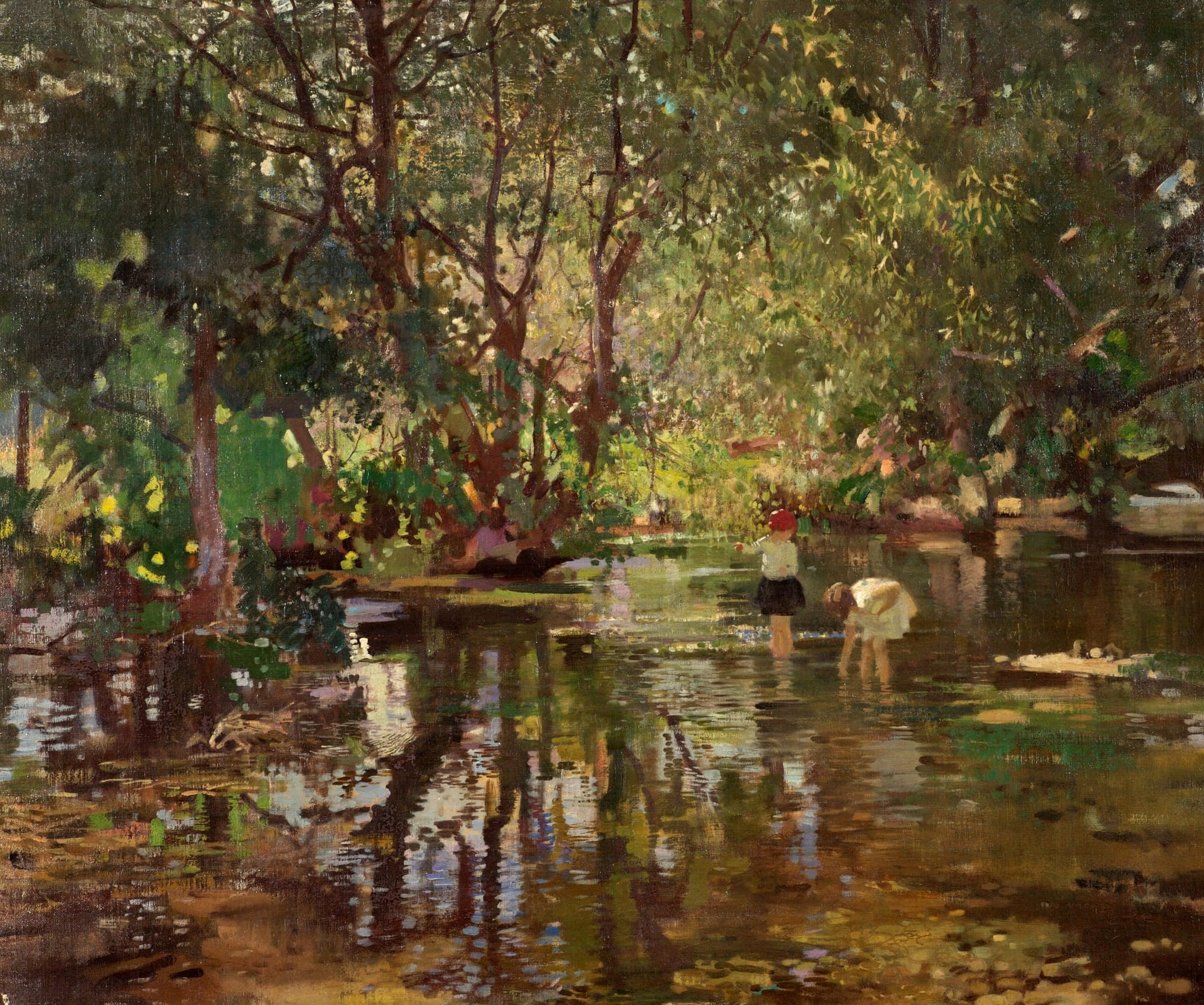
As a collective, we also reached out via our blog, Culture on Call, for information about the artist's artworks. We received responses internationally and nationally. Portraits such as those of Minnie and Margaret came to light. These are wonderfully accomplished pieces with exceptional background stories.
Gathering the works
Melanie next delivered a large wish list of works to the exhibition team. Fred was prolific and returning to the same spots was crucial to his process. Therefore it was inevitable that we had a lot of work on our hands. We knew from this point that he worked in different styles and genres and that for our show to comprehensively cover his oeuvre, the exhibition would have to reflect this.
We embarked upon numerous trips to gather the works, bringing them all to our headquarters, where multiple layers of work took place. This included one of our biggest projects yet - making a catalogue.
Making a catalogue
It felt right for this exhibition to have an accompanying book. Fred's work is so photogenic and deserves attention, yet no publication currently exists on the artist. We could not miss this opportunity to create a lasting record of his work and the exhibition. Artists of Fred's era have commonly suffered from neglect, and this is a contribution towards righting that wrong.
Paul Carter, an experienced professional photographer, took the pictures and he worked methodically through all the artworks destined for inclusion in the catalogue. We created a factory-type system to convey the artwork to Paul. Adapting to different sizes, colours and depths, he photographed over 100 paintings over a few days. The work was intensive, but the outcomes were unbelievable.
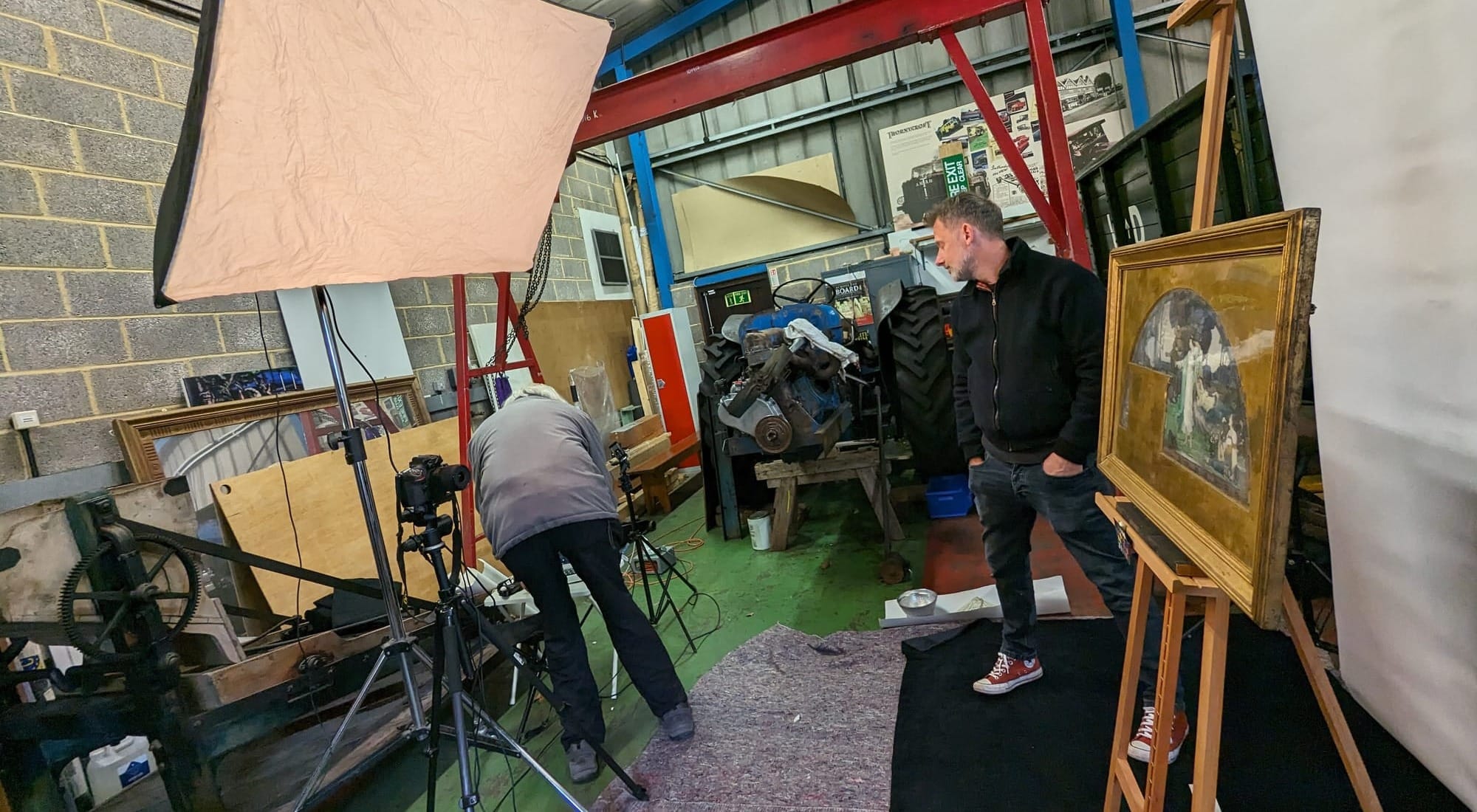
Images in the catalogue are so lifelike that you may mistakenly think that the paint might flake off if you mishandle the pages.
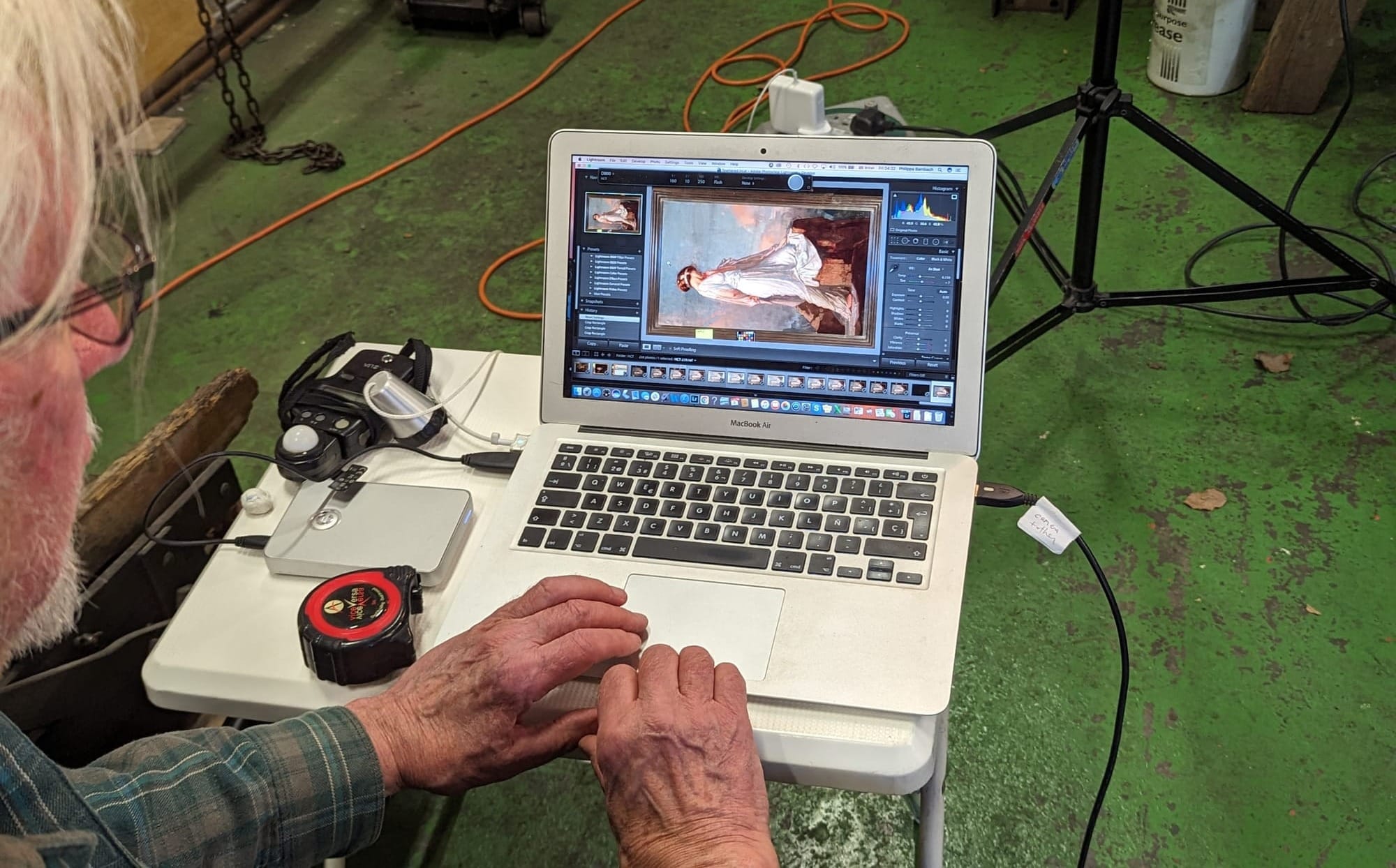
But the catalogue does not just consist of images. Dr Melanie Rose has provided a brilliant text, organised thematically. Her writing is incisive and sympathetic, charged with the know-how of her artistry. She reads works meticulously and situates the reader close to the artist. Her words fill the panels in the exhibition itself too. I provided an essay text introducing Fred's progression into becoming a professional artist and Exhibitions Manager, Kirsty Rodda, oversaw the whole endeavour and worked tirelessly to bring it all together.
Next, it was on to the main event:
The Install
Having brought the works to the gallery, section after section ascended to the walls. Fred’s garden, family, commissions, beaches, scenes from everyday life, trees and abbeys surround us on canvases and boards and in frames, large and small. Elaborate gilding and austere panels hold sketches, drawings and heavily-worked paintings. It is a cornucopia of Fred’s artistry and life. Beautiful creations are restored, but so too is the spirit of their creation.
Assembling one of the largest exhibitions ever to grace The Gallery, we needed all the support we could get. Conservator Ruth James, technicians Mike Jones, Michael Wright and Boris Allenou, with me (Visual Arts Exhibitions Assistant), Kirsty Rodda, Visual Arts Exhibitions Manager, and curator Dr Melanie Rose all worked together to ensure the installation was successful.
Over a hundred pieces, including landscapes, portraits and still lives have come to us for this exhibition. Much of this work has never been seen before, let alone seen together. Appleyard’s artistic legacy is here in its most full form to date. Visitors can marvel at his ethereal decorative human forms, gaze into the eyes of the near living subjects of his portraits or trace the artist's engagements with the Itchen Valley landscape.
Rising Splendour: Fred Appleyard - From the Royal Academy to the Itchen Valley is open until the 18th of September.
Book online here

